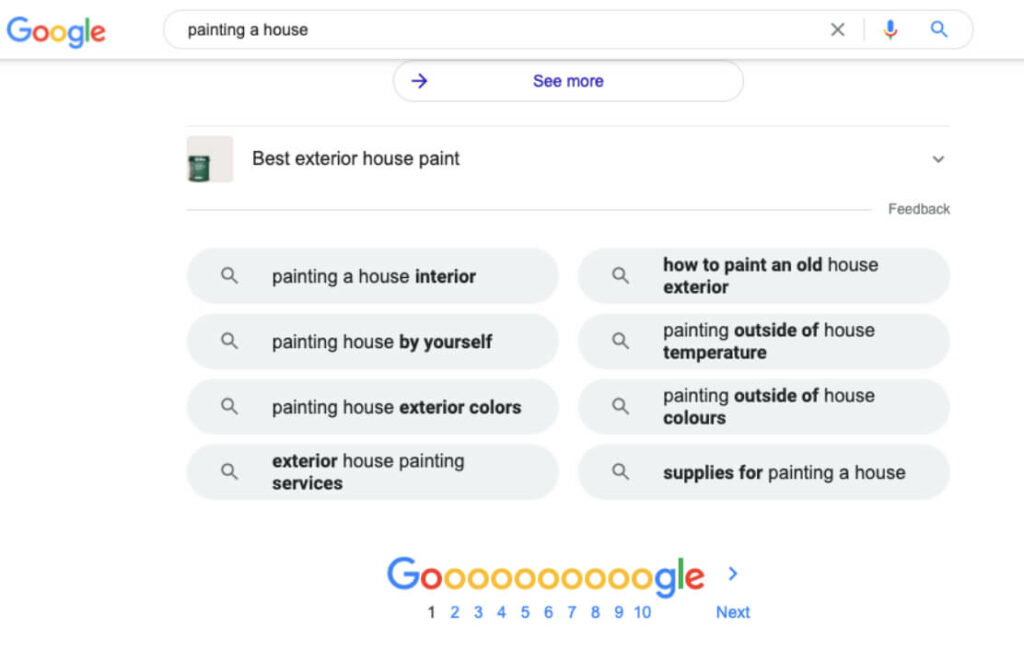In the words of Bill Gates, “content is king.” Nowhere is that mantra more true than in the world of Search Engine Optimization and Google, where the top hits of Google searches and the sites at the top of rankings are the ones that offer rich content that is the most valuable to users. Blogging can be a valuable tool to boost your site’s SEO, improve your ranking on Google, and attract users to your website with informational articles – the blog is a tool you can leverage to get Google to trust your website and promote it above your competitors. Here are some benefits and tips of SEO blog writing for your website:
Use Keyword Search
First and foremost, in order to maximize your blogging’s SEO potential, you need to conduct keyword search, or the process of finding and analyzing the most popular search terms users enter into google to find data for a specific purpose. In order to identify keywords, first identify some “topic buckets” where keywords would fall into. For example, if your blog topic was home renovation, you could come up with the following “topic buckets”:
- Remodeling
- Painting
- Decontamination
- Home Repair
- Bathroom Remodeling
- Kitchen Remodel
- Water Damage Repair
Under these bucket terms, you can brainstorm certain keywords. These are the keywords customers might type in in order to find out more information about the topic. For example, if we took the topic bucket “painting,” under “painting” we could parse out the following keywords:
- How to prepare a room for painting
- What materials do I need for painting a house
- How to paint drywall
- Painting a house by yourself
- Supplies for painting a house
- Painting outside of house colors
- Best exterior house paint
Some of these phrases were pulled from the suggested keywords by Google, which is also a great resource for figuring out relevant keywords that will bring the most traffic to your website.
You can find them at the bottom of a Google page here:

As SEO has evolved over the years, it has become less important to include the exact keywords that match a person’s searches on Google – rather, you must identify your target audience’s intent behind keywords. For example, a user may key in the keyword “drywall” and their intent may be either “how to paint drywall,” or their intent may be more informational… perhaps they are simply trying to figure out the definition of painting terms. The best way to figure out what a user’s intent is in a keyword is to search the keyword and see what the top results are.
Add visuals
A picture is worth a thousand words, and users who use search engines like Google will often click the most on links to blogs that include images and videos. In order to win the lucky golden ticket of the website with an image pack or video snippets, make sure to include visually grabbing images or graphics on your blog post. Using alt text, or “alt attributes,” or “alt descriptions” in the way you write your HTML code for blog posts is key to appealing to web accessibility, and important to determine whether your image or video appears in search engine results pages.
Make sure to include detailed HTML descriptions of your images for visually-impaired users, and make it easier for search engine crawlers to index your page.
Increase Website Traffic
Each time you create a new blog post, you generate a new URL that can pop up in someone’s search, increasing your opportunities to be ranked in Google searches and potentially increasing website traffic.
Build Credibility
Writing blog articles can also help you build your credibility as an expert in your field. Blog articles that only include shameless plugging for your services or products can actually turn a potential customer away. Instead of hitting potential customers over the head with your products and services, you can produce informational blog articles that provide valuable insider knowledge that can help you showcase your authenticity, attract repeat prospective clients, and establish yourself as a valuable resource to users in your field. With repeat users visiting your site for knowledge, Google will begin to see you as an authoritative website in their algorithm and rank you among the highest sites for certain keywords.
Create Fresh Content
Producing fresh content will rank your website higher. For example, users looking for the best way to optimize their social media campaign are more likely to read an article from 2021 versus an article that is four years old. If you blog often and consistently, you’ll ensure that you always have fresh content to offer search engines. The more often you write blog articles, the more indexing occurs, and search engines will favor your site because of the consistent output.
Make Backlinks
Blogging can also be a great way to boost your backlink network between your website and other websites. A backlink refers to a hyperlink that links a user from their website to another reputable site. Pages with high amounts of backlinks typically rank higher in search engine optimization and crop up more often in “organic searches.”
In fact, backlinks are one of the top three variables Google considers in SEO ranking for websites. A backlink is essentially an endorsement or vote from another site that says to Google that this content is good and reliable. However, as with most things, quantity does not necessarily mean quality – make sure to only include high quality backlinks to trusted, authoritative websites with strong domain authority. Include hyperlinks to other pages on your website in your blog articles to build your credibility and obtain a higher search rating. Make sure you keep your backlinks under 100 – Google may flag you as a spammer if you include a barrage of links and barely any content.
Create a Hub Page
It is a good idea to encourage content to be clicked on from your archives by creating a hub page of your best content on your website. You can organize your content into different categories – using our home renovation example again, you could create categories of “Painting,” “Kitchen Remodeling,” and “Damage Repair.” This type of organization makes your blog more appealing to users and breathes new life into old content that is still good.
Limit the amount of Ads Displayed
The last thing you want is to clutter your blog article with ads – users will click away from your website if it is riddled with ads because it stunts loading speeds and too many ads turns users off from your content, no matter how rich it is. Make sure to limit your ads (if you must use them) to only two or three high performing ads, and cut the rest!
SEO blogging takes time and you may not see results for months after you get to work writing SEO-rich content, but your hard work will surely pay off. Statistics show that companies with a successfully-run blog generate 67% more leads on a monthly basis, versus ones who do not own a blog, and for small businesses, those that blog see 126% more lead growth than those that don’t. If you take a few of these tips to heart, you can harness the potential of SEO and climb up the ranks of search engine result pages. Happy blogging!


